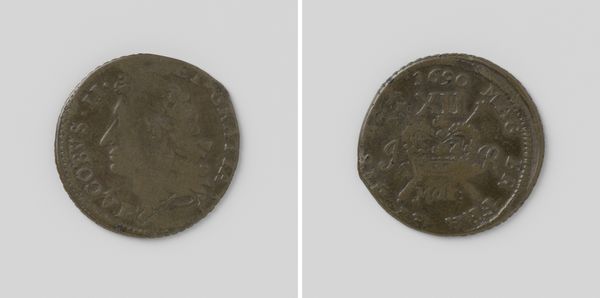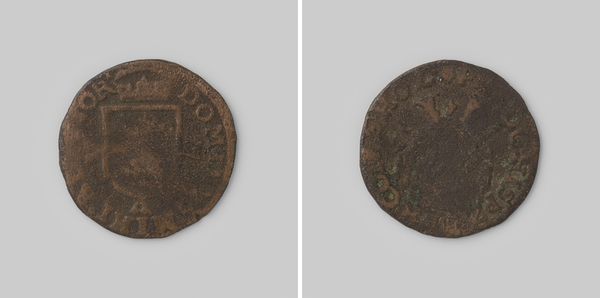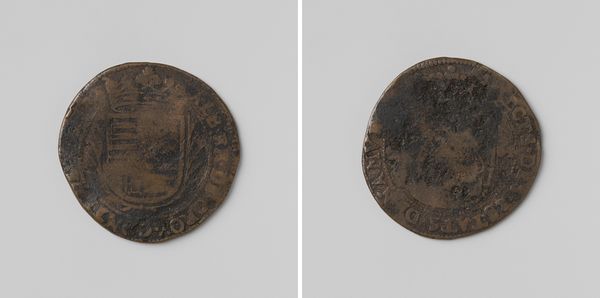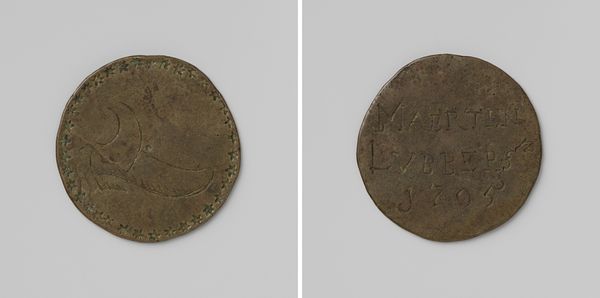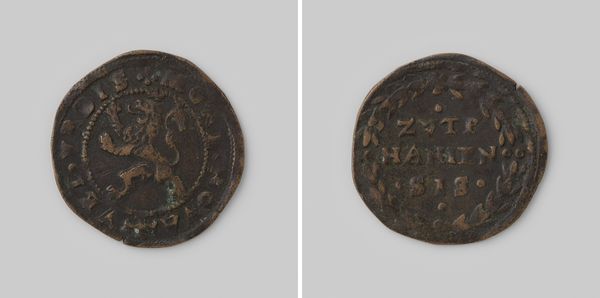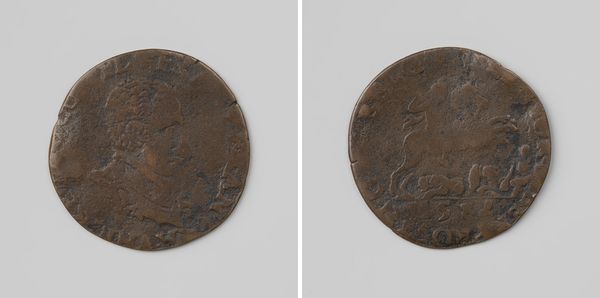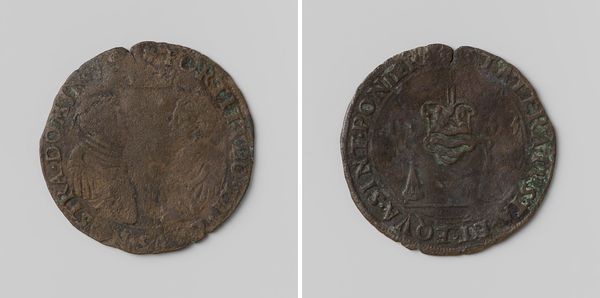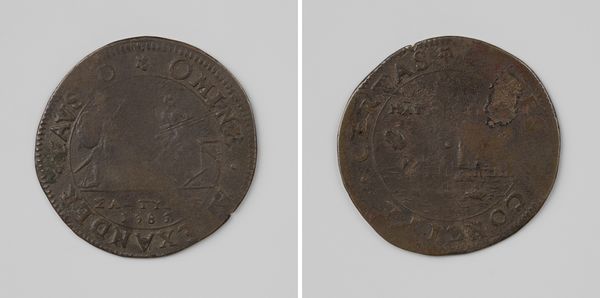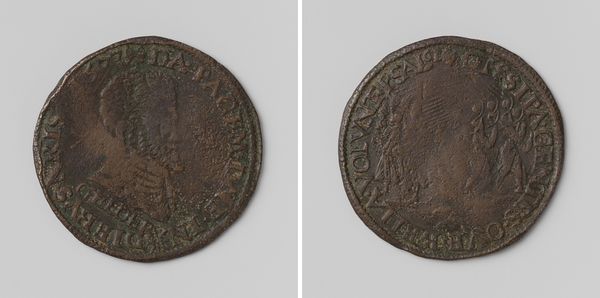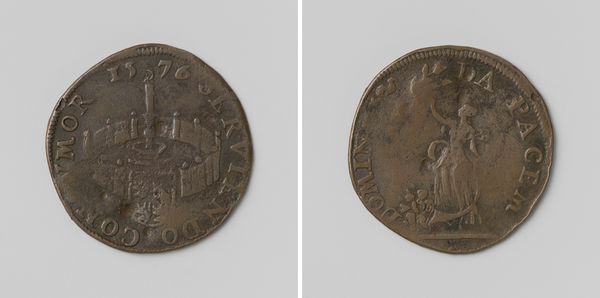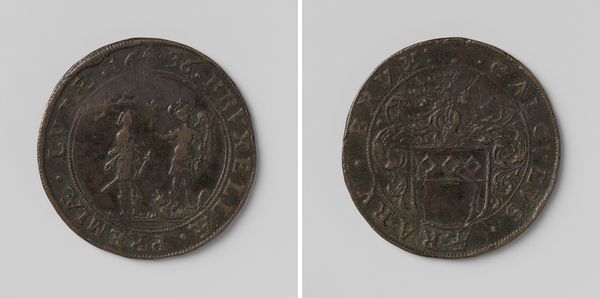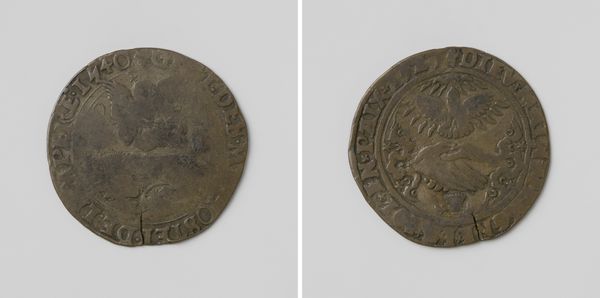
metal, bronze
#
portrait
#
dutch-golden-age
#
metal
#
bronze
#
ancient-mediterranean
#
ceramic
#
round circular shape
Dimensions: diameter 2.5 cm, weight 6.38 gr
Copyright: Rijks Museum: Open Domain
Curator: Here we have a bronze coin from 1576, titled "Hollandse oord op naam van Philips II," which roughly translates to "Holland penny in the name of Philip II." It's part of the Rijksmuseum's collection, giving us a tangible connection to a turbulent time. Editor: My initial reaction is that it appears well-worn, almost humbled by time. The low relief and dark patina evoke a feeling of weight, of history pressing down on it. It speaks volumes despite its size, doesn't it? Curator: Absolutely. These coins weren't just currency. The coat of arms, along with the depiction of Hollandia holding a lance, served as powerful symbols, reinforcing the authority of the Spanish crown in the region and reminding the Dutch populace who was in charge. Think of the semiotic weight a simple object like this carried! Editor: And in 1576? At a critical juncture in the Dutch Revolt. Minting coins bearing Philip II’s name, while simultaneously fighting against Spanish rule… it’s a fascinating paradox that underscores the complex relationship between identity, resistance, and economics. Who controlled the money supply, controlled the narrative to some extent, right? Curator: Precisely. The symbolism of Hollandia herself, with her fierce gaze and firm grip on the lance, became a potent image of Dutch resistance. That same figure served as the representation for freedom, even while the literal text declared subservience. Editor: So the act of producing and using this coin, regardless of the intent of Philip II, potentially became an act of subversion itself? Each transaction a tiny rebellion in the marketplace? It makes you wonder how the merchants and common folk felt, handling this daily dose of propaganda. It truly represents power structures manifested through material culture. Curator: I completely agree. Looking closely, we see the wear and tear... perhaps that wear symbolizes not only the handling, but also, symbolically, the enduring resilience of the Dutch spirit and this collective "thumbing of the nose." A tiny piece of bronze that witnessed a revolution. Editor: It’s amazing how objects, seemingly so mundane, can become vessels of such profound meaning. It gives me goosebumps to consider. Curator: Indeed. An object lesson, etched in metal.
Comments
No comments
Be the first to comment and join the conversation on the ultimate creative platform.
